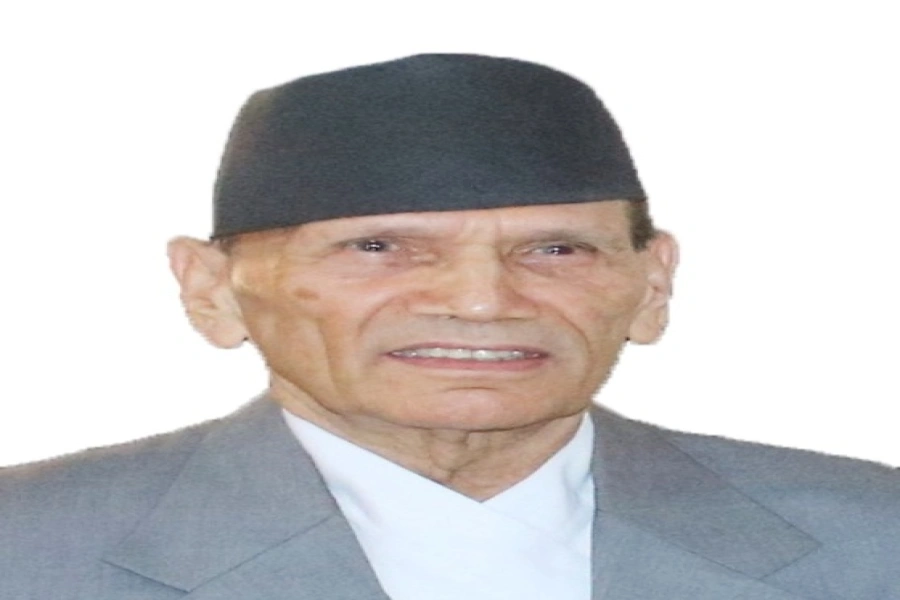Nepal implemented 609 climate-related projects between 2013 and 2017 that amounted to USD 1.92 billion. Despite pouring billions of rupees in the name of adaptation, the data from the University of Notre Dame, the Netherlands, shows the adaptive capacity of Nepal has gradually declined in the last two decades of this century.
There is no track of the exact figures of climate finance Nepal has received so far in the name of climate adaptation, mitigation, and resilience from the international donor communities. Out of 118 active INGOs in Nepal, 18 have projects related to climate change. Millions of dollars have been spent by those INGOs to increase the adaptive capacity of rural households and farmers in different parts of the country. Additionally, in the early second decade of 2000, Nepal received funding from the UNFCCC’s Adaptation Fund, Least Developed Countries Fund, and Global Environment Facility to increase its adaptive capacity. Currently, there are three big projects worth $87.8 million funded by the Green Climate Fund.
Being one of the least responsible countries for climate change (Nepal emits only 0.027% of total GHGs emission) and most vulnerable to its impacts, there is no question that Nepal should receive more climate finance to adapt as well as to decarbonize its economy in the future. There is also no question that climate finance should come in the form of grants, or in the language of climate activists, as reparation. Having said that, we should not be ignoring how the received climate fund has been utilized and questioning whether the channeled climate finance achieved its intended objectives.
The current narrative on climate change in Nepal seems to be believing that getting huge climate finance alone will solve the problem of climate change. Many folks, including both scholars and activists, working on climate change in Nepal overly focus on climate finance (or asking for money from those countries who cause this problem). I fully support and echo their voices. But what perplexed me is their silence on the accountability and transparency aspects of how climate finance has been mobilized. Growing up hearing the news of rampant corruption and unnecessary bureaucratic hurdles, I believe many people like me have questions about the transparency and accountability of climate finance.
Outcome from last decade’s investment in climate change
SHIFT for Our Planet: Youths urge authorities to make climate j...

Nepal implemented 609 climate-related projects between 2013 and 2017 that amounted to USD 1.92 billion. Despite pouring billions of rupees in the name of adaptation, the data from the University of Notre Dame, the Netherlands, shows the adaptive capacity of Nepal has gradually declined in the last two decades of this century. This is contrary to what the Government of Nepal says. The Government of Nepal declared the pilot project of Local Adaptation Plans of Action (LAPA) a success and decided to up-scale it. However, in one article, it is argued that the declining adaptive capacity can be attributed to either severe impacts of climate change which has already exceeded our capacity to adapt, or Nepal has not been able to effectively utilize the climate finance received for adaptation. And in some cases, those adaptations interventions increased vulnerability rather than reducing it in Nepal as shown by scholars in this study. This seriously raises a big question on the effectiveness of the adaptation interventions implemented in Nepal.
In addition to this, my personal experiences make me pessimistic that the Government of Nepal will maintain transparency on the mobilization of climate finance in the future as well. There are multiple reasons for this pessimism. One of them is the inability of the Government of Nepal to record the total number of LAPAs, which they declared successful, being implemented in the country. It is shameful to share that when I reached out to the relevant ministry for the authoritative data on LAPA, including the total number of implemented LAPAs and who supported financially and technically, for my thesis, they told me they have no record of such information. The under-secretary who I reached out to sent me an email with all LAPAs which he thinks are being implemented in Nepal. I could not rely on that information because I could not cite such informal information for my academic work.
Maintaining such a small information system is not rocket science. People with basic computer skills can do it if they have the willpower and if the government wants to stay transparent. Despite being a climate optimist, I am pessimistic about the transparency and accountability mechanisms that the Government of Nepal has in place. In this scenario, a strong transparency mechanism will be very crucial in the future with the expected increasing inflow of climate finance to hold the Government of Nepal accountable.
Transparency in the future
Transparency is also equally important to hold the Government of Nepal accountable to what they promise in their nationally determined contribution (NDC). It is expected that the information generated from the enhanced transparency framework (ETF) under the Paris Agreement will hold the parties to the Agreement accountable to their climate promises. One of the assumptions is that the national media, civil society organizations, activists, and the academia can put pressure on the national government based on data published on their country’s effort and pledges.
But unfortunately, many climate discussions in Nepal largely seem to be ignoring these important aspects. I have not seen any activist or scholar raising the question on why Nepal has not been able to submit any of the last four biennial update reports (BURs). BURs which non-Annex I Parties to the United Nations Framework Convention on Climate Change (UNFCCC) are supposed to report every two years at their own discretion, contain information on national greenhouse gas inventories and information on mitigation actions, needs and support received.
In this light, there is high doubt that Nepal will submit the biennial transparency report (BTR), which gauges the progress made by the Parties to their climate goals, under the ETF timely. The first BTR report is due by the end of 2024. In the absence of such reports and information, how civil societies, activists, and relevant stakeholders, if they willed, will shame the Government of Nepal for their inactions and opaqueness of their operation.
Way forward
I would like to reiterate again that I fully support the call for more climate finance for both mitigation and adaptation. But I argue, at the same time, that we also equally need to be vocal on the transparency and accountability on the mobilization of the climate fund. There are a few simple things that can be done to maintain transparency and build trust.
Firstly, the Ministry of Forest and Environment (MoFE) should create an online platform that will track the progress of Nepal’s climate ambitious goals. The online portal can provide up-to-date information on adaptation projects, total climate finance received and the name of the donors. Additionally, they can utilize the new data visualization techniques that help to display and disseminate information in a simpler way to reach a wider audience. Currently, if you visit the “Climate Change Management Division” of the MoFE, there is no useful information except for the name of the Spokesperson and Information Officer.
Additionally, the Government of Nepal should collaborate with universities for research and regular update and maintenance of the above-mentioned online portals for climate goals. The government should not delay in transforming universities from information passing centers to knowledge creation centers. Knowledge creation followed by dissemination is pivotal to hold the government accountable to its promises and effective utilization of climate finance.



































